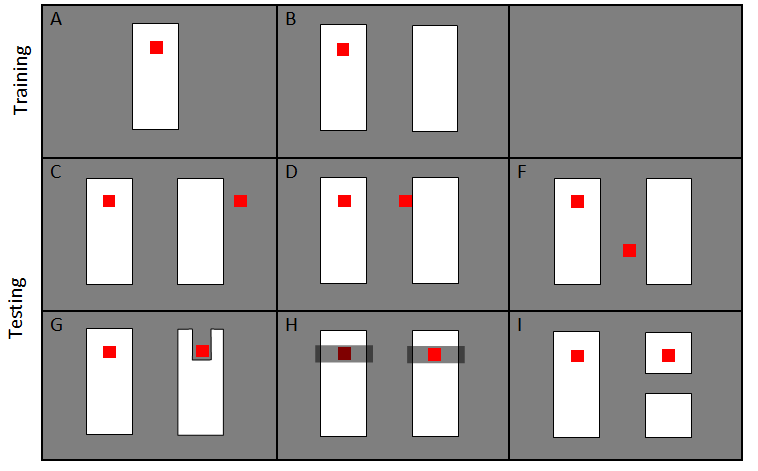Methods
Summary
The method I'm using to test what striped skunks understand about support is called the slat pulling task. I’ve been giving skunks a series of tasks where they are required to pull a wooden slat supporting food and ignore unsupportive slats. The skunks start with just a single slat supporting a piece of food, and then are trained with two slats, one with a piece of food on it, the other with no piece of food. Once they learned this task, I probe their knowledge with a series of tasks that assess what exactly they understand about support. This is because support really involves multiple physical concepts: the food and support must be in contact, the support object must be beneath the food, the support object must be solid and connected. In addition, animals must not be using various biases or non-physical cues such as proximity of the food to the skunk, or perceptual containment of the support around the food. This last bias revolves around the fact that animals can use visual cues without understanding how something works, if those cues are usually consistent enough with actual support.
For that reason, to rule out such trial-and-error learning about visual patterns, I’ve also been giving skunks an arbitrary version of a slat-pulling task where the skunks are required to touch a painted line with a piece of food on it in order to be handed that piece of food, and ignore painted lines with no food. These arbitrary tasks mimic the visual patterns of the real slat tasks exactly; the only difference is lack of an actual support relationship between the object (painted line) and food.
Fig 1. Different conditions for Experiment 2. A). Training condition
with one slat. B). Training condition with two slats. C). Assesses on/off. D). Assesses
contact. F). Assesses proximity bias. G). Assesses perceptual containment. H).
Assesses perceptual containment (bridges). I). Assess connection.
Protocols
This project has not yet shared any protocols.
